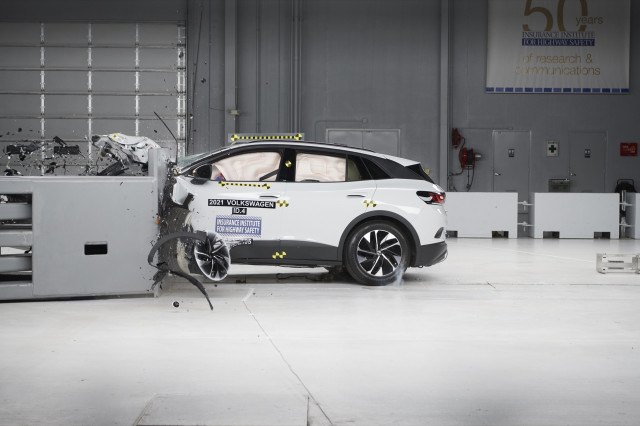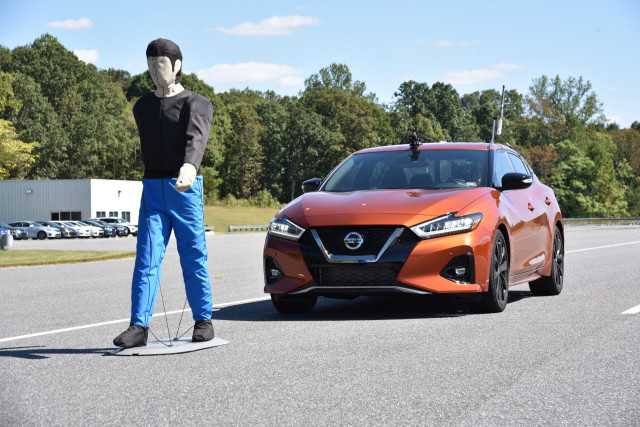What is an IIHS Top Safety Pick and why does it matter?
The Insurance Institute for Highway Safety announced its 2022 Top Safety Picks last week, but what does it mean for new car shoppers?
This year marks a critical time in automotive safety assessment as the IIHS plans to toughen its criteria in the wake of record traffic and pedestrian fatalities. As more automakers equip their cars to meet the criteria for the automotive industry’s most rigorous safety award, more automotive outlets ranging from Consumer Reports to The Car Connection and our TCC Rating are giving more weight to TSP criteria in recommending cars. Here’s how TSP awards are measured and why they matter.
Who is the IIHS?
First, the IIHS exists separately from the federal government’s NHTSA and its five-star safety rating system. Funded by the insurance industry but working as an independent non-profit organization, the IIHS and related Highway Loss Data Institute research and study how to reduce traffic crashes through both crashworthiness and crash avoidance technology. Launched in 1959, but with its own crash-test facility not opening until 1992, the IIHS has evolved into a greater level of independence and less bureaucratic red tape then the NHTSA.
“IIHS tests are designed to complement the ratings carried by NHTSA to provide consumers with more information when selecting a vehicle, and to push vehicle improvements further,” IIHS director of media relations Joseph Young said in an interview. “Our tests are designed around the types of crashes happening in the real world that may not be reflected by the government’s crash tests.”
In short, the IIHS is more modern and better adapts to the times. Instituted in 1993, the NHTSA’s NCAP five-star rating system assessed front, side, side pole, and rollover crash-test results. By 2006, that rating appeared on the Monroney sticker, or vehicle label, that is federally mandated to be on every new car sold.
The idea was transparency. But transparency does not guarantee effectiveness. Even though the NHTSA announced plans to update its five-star system in 2015, the prolonged public comment period has devolved into stasis at best. There hasn’t been a meaningful update to the NCAP since 2010. During that time, American vehicles have grown taller, larger, and heavier, with bigger SUVs displacing smaller sedans on American roadways. Organizations ranging from the National Safety Council to Consumer Reports and the AAA have urged NHTSA to get up to date, and to streamline the confusing driver-assist naming conventions. Even the NTSB called the NHTSA outdated, back in 2019.

IIHS Top Safety Pick testing
Crash tests
In its place is the more dynamic and comprehensive IIHS, which assesses six different crash tests to better reflect real-world incidents.
“Our first crash test, the moderate overlap test, was launched because the real-world data showed that many crashes with injuries were the result of offset crashes, rather than flat crashes like the crash tests being performed by the NHTSA,” Young explained. “We’ve pushed that further with the introduction of the small overlap tests in the last decade as people were still being injured in these smaller overlap crashes despite improvements in vehicle design. Similarly, the original IIHS side crash test was designed due to concerns that the government’s side crash test was not capturing all the side crashes that occur in the real world.”
To earn either a 2022 Top Safety Pick (TSP) or Top Safety Pick+ (TSP+) award, a vehicle must get top “Good” marks on all six crash tests: the moderate overlap front test replicates a head-on collision between two vehicles going just under 40 mph; the driver-side front overlap test replicates the front driver side of the vehicle striking a stationary object such as a tree or pole at 40 mph; a passenger-side overlap test does the same on the other side; a roof strength test to assess rollover crash safety; head restraints and front seat safety tests; and a newly revised side impact test.
Launched in 2021 and simulating a T-bone crash, the revised side impact test employs a heavier and taller barrier to replicate an SUV or pickup truck striking the test car instead of a shorter car as in the preceding decade. (For more on the particulars of each test, check out this link.)
It’s one of three test enhancements rolling out next year, intended to raise the safety bar for TSP and TSP+ designations prized by automotive marketers.

IIHS Top Safety Pick testing
Driver-assist systems and headlights
The IIHS also assesses the efficacy of automatic emergency braking systems and headlight visibility.
For a car to earn a TSP or TSP+ rating, it must come available with automatic emergency braking that earns at least an “Advanced” rating in avoiding or nearly avoiding a crash with vehicles and pedestrians at speeds of 12 mph and 25 mph. The IIHS estimates the technology will cut in half the number of rear-end crashes, which are the most common type of car crash. Major automakers made a voluntary commitment to equip at least 95% of new cars sold with AEB as standard by September of this year. To avoid penalizing automakers before the deadline, the IIHS doesn’t mandate AEB as standard equipment to earn a TSP+.
The proliferation of AEB systems has led to complaints of phantom braking, however, with Tesla and Honda vehicles being investigated by the NHTSA for braking suddenly and randomly, without a clear and present danger.
Next year, the IIHS will add a nighttime pedestrian crash prevention component to the AEB rating, and “Advanced” or “Superior” ratings will be required for a TSP+ designation. Currently, AEB systems need to earn “Advanced” ratings in tests that show a speed reduction at 37 mph to avoid or mitigate striking a pedestrian walking beside the road. The emphasis on pedestrian safety arose from pedestrian crash fatalities increasing 51% since 2009, according to the IIHS.
Additionally, and most problematically since the IIHS toughened the criteria in 2020, TSP winners must be offered with headlights that rate at “Good” or “Acceptable,” while TSP+ honorees must make those headlights standard. Next year, those headlights have to be standard to earn a TSP.
Automaker compliance has increased even as the standards have become more rigorous.
“As manufacturers showed they could produce headlights with better lighting and less glare, IIHS decided to encourage them to make this improved equipment standard,” the IIHS said in a statement last year. “The strategy seems to be working. A year ago, only 23 vehicles qualified for the higher-tier award. Today, the number has more than doubled.”
As the IIHS raises the bar for 2023 TSP and TSP+ honors, the IIHS expect fewer vehicles to meet the tougher criteria, by design.
“We expect to see a drop in the number of vehicles earning our awards in 2023 with the introduction of two new tests and a tightening of our headlight criteria,” Young said.
But it should pay safety dividends in the long term and offset the increase in fatal car crashes.
“We expect to see [automakers] continue to improve crashworthiness, front crash prevention systems and headlight options as they strive to earn our safety awards under the tougher criteria in 2023.”

